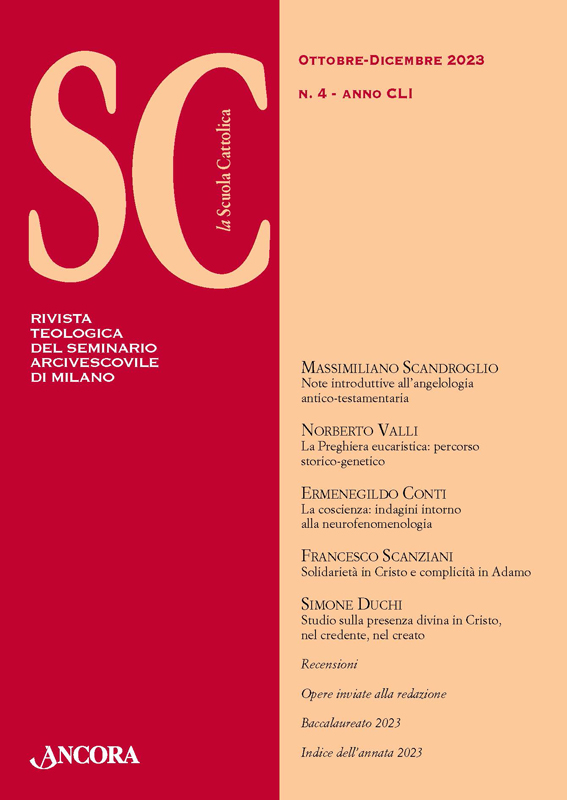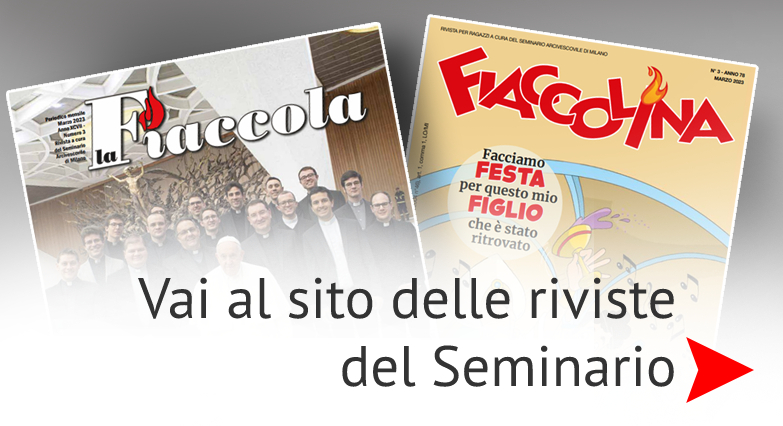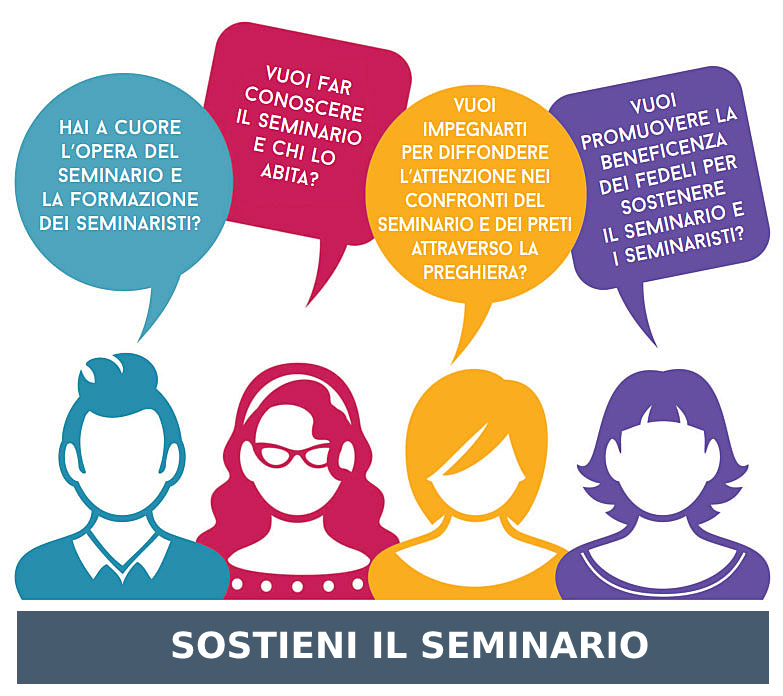Espressione della scuola teologica del Seminario Arcivescovile di Milano, “La Scuola Cattolica” è una delle più antiche riviste teologiche

MASSIMILIANO SCANDROGLIO, Collaboratori di Dio e amici degli uomini. Note introduttive all’angelologia antico-testamentaria, 535-560
L’articolo tratteggia un quadro introduttivo all’angelologia vetero-testamentaria, indagandone gli aspetti salienti dal punto di vista storico, letterario e simbolico. Lo scopo del contributo consiste nel far apprezzare al lettore la visione degli angeli secondo il dettato scritturistico nel suo specifico valore teologico, evitando così un approccio alla questione tendenzialmente critico e semplificante, come è tipico del pensiero moderno in proposito.
The article traces an introductory framework to Old Testament angelology, investigating the main aspects from a historical, literary and symbolic perspective. The aim of the paper gives the reader an appreciation of the vision of the angels according to that dictated by Scripture in its specific theological value, thus avoiding a critical and simplifying approach, typical of modern thinking in this field.
NORBERTO VALLI, La Preghiera eucaristica: percorso storico-genetico in prospettiva sintetica, 561-591
A partire dal presupposto che lo sviluppo della liturgia consiste unicamente in quello delle parti che la compongono, il contributo, dopo aver precisato che la “memoria del Signore” non è stata custodita dalla Chiesa semplicemente nella ripetizione di un nucleo minimale di parole sulla materia del pane e del vino, ma nella ripetizione articolata di azioni (“prendere”, “rendere grazie”, “spezzare”, “dare”), si propone di offrire un quadro sintetico delle acquisizioni che gli studi in materia hanno raggiunto a riguardo dell’origine e dell’evoluzione di ciascuna delle sezioni che costituiscono la Preghiera eucaristica, con un’attenzione particolare alla produzione anaforica postconciliare in ambito romano e ambrosiano.
Holding true the presupposition that the development of the liturgy consists solely in that of the parts of which it is composed, this contribution, having clarified that the “memory of the Lord” has not been preserved by the Church simply in the repetition of a minimal nucleus of words on the matter of the bread and wine, but in the articulated repetition of actions (“to take”, “to give thanks”, “to break”, “to give”), we propose offering a synthetic picture of the acquisitions which studies on the subject have reached concerning the origin and the evolution of each of the sections which constitute the Eucharistic Prayer, with a particular attention to the postconciliar anaphoric production in the Roman and Ambrosian contexts.
ERMENEGILDO CONTI, La coscienza: indagini intorno alla neurofenomenologia, 593-625
L’articolo indaga come la neurofenomenologia affronta il tema della coscienza. Dapprima è presentata la distinzione di J. Chalmers tra i problemi facili e il problema difficile: quest’ultimo, filosoficamente più interessante, riguarda il rapporto tra la descrizione scientifica e la percezione individuale dei fenomeni coscienziali. Il tema è ripreso da Varela, il primo a proporre a livello metodologico l’integrazione tra neuroscienze e fenomenologia. Uno sviluppo contenutistico è proposto da Gallagher e Zahavi, che, su una base fenomenologica, innestano i dati delle ricerche scientifiche.
The article investigates how neurophenomenology addresses the theme of Consciousness. From the outset J. Chalmers’s distinction between easy and hard problems is presented: the latter, philosophically more interesting, regards the relationship between the scientific description and the individual perception of the phenomena of consciousness. The theme is looked at again by Varela, the first to propose the integration between neuroscience and phenomenology at a methodological level. A further development of content is proposed by Gallagher and Zahavi, who both, onto a phenomenological root-stock, graft the scientific data.
FRANCESCO SCANZIANI, Solidarietà in Cristo e complicità in Adamo. Per continuare a pensare il Peccato Originale, 627-657
Sullo sfondo del modello neoscolastico, lo studio attraversa il dibattito contemporaneo riguardo il Peccato Originale: dalle iniziali problematizzazioni del ’900, alle ricerche degli anni conciliari, con la sua messa in crisi, fino ai nuovi tentativi di sintesi degli anni ottanta e novanta. La successiva calma rischia il disinteresse per il tema. L’A., mettendo a frutto la lezione conciliare, intende rilanciare il confronto, per continuare ad approfondire il tema e annunciarlo anche nel presente a partire dalla originaria solidarietà in Cristo che illumina l’Antropologia Teologica.
With the Neo-Scholastic model as a basis, this study looks at the contemporary debate regarding Original Sin: from the first problematizations of the 1900’s, to its being thrown into crisis by the various studies of the years of the Vatican Council, up until the new attempts at synthesis in the 80’s and 90’s. The resulting calm risks to produce a disinterest in the subject matter. The author, putting to good use the Council’s teaching, intends to renew the debate, so as to continue to deepen the theme and render it relevant to today beginning with the original solidarity in Christ which enlightens Theological Anthropology.
SIMONE DUCHI, Forma Filii. Studio sulla presenza divina in Cristo, nel credente, nel creato, 659-685
La fede cristiana confessa Dio onnipresente nel mondo. Col termine incarnazione afferma che lo stesso Dio si fa presente da uomo agli uomini, mentre in un altro termine, inabitazione, convoglia un insieme di processi attestati dalle Scritture (vocazione, ispirazione, adozione, giustificazione, conformazione, santificazione). Lo studio cerca il principio ordinatore dei tre ambiti indicati nel titolo, un paradigma capace di illustrarne la logica comune. A tal fine, guidata dall’eredità teologica di Tommaso d’Aquino e Karl Rahner, l’ipotesi di lavoro fa leva su entrambe le lezioni, sondando il loro spessore cristologico.
The christian faith professes an omnipresent God in the world, and with the term incarnation it affirms that the same God presents himself to all men as a man, while by another term, inhabitation, a collection of processes, testified by the Scriptures (vocation, inspiration, adoption, justification, conformation, sanctification), are brought together. This study seeks the principle which brings order to the three areas indicated in its title, a paradigm capable of illustrating the common logical thread. So this end, guided by the theological patrimony of Thomas Aquinas and Karl Rahner, the works hypothesis basis itself on the teachings of both, examining their christological consistency.

